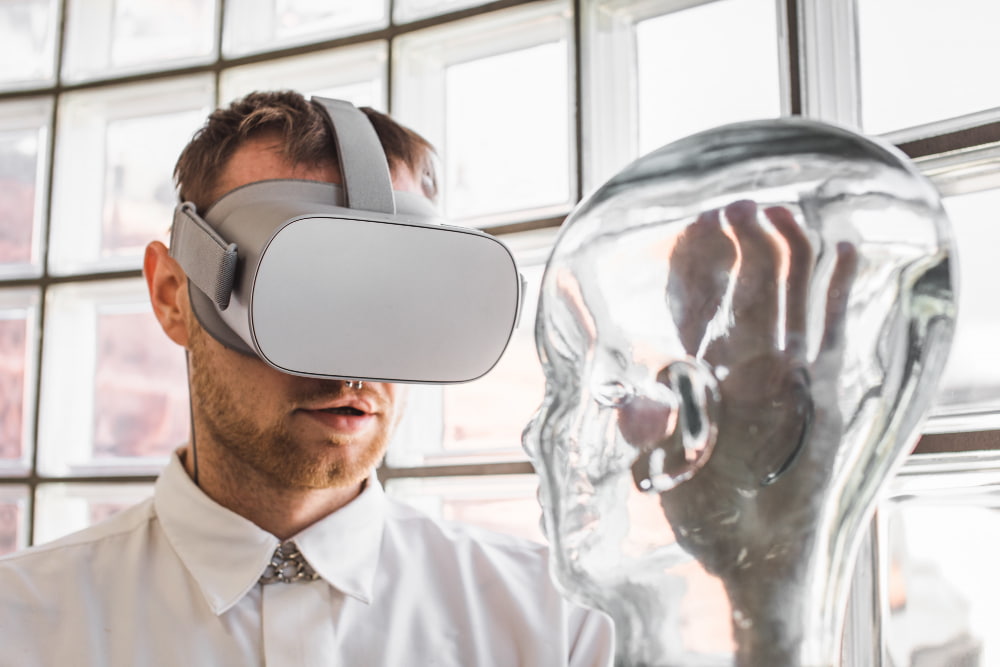How Virtual Reality is Transforming the Travel Industry
Table of Contents:
The travel industry is constantly evolving and has been at the forefront of digital innovation for years. Although the adaptation to technological innovations comes relatively quickly to travel professionals and potential customers are eager to take advantage of them, it is clear that the industry is still looking for new options for contact and communication. One example of this is the use of virtual reality in tourism. How does VR technology support the tourism sector? Can it better serve customers interested in travel? In this article, we tackle these questions and more, so read on to find out all about it.
How is the tourism sector developing?
According to data released by the World Economic Forum on Digital Transformation (DTI), by the end of 2025, tourism-related industries – including travel and aviation – could be worth as much as $305 billion. There will also be a not-so-insignificant migration of funds from traditional travel businesses to new digital competitors. Specialists estimate that this could amount to approximately USD 100 billion.
These figures clearly show that digital technology is now permeating every area of tourism and must be treated as a top priority by companies in the industry. However, many are still lagging behind when it comes to implementing innovations, including virtual reality technology, to provide better customer service, increase customer loyalty, and improve the bottom line.
Unlock the future with Mazer: Your innovation partner.
Virtual reality technology in tourism – how can it be used?
Travel is a passion for many people. The opportunity to explore new corners of the world, experience different cultures, and have adventures often awakens an appetite for more. However, for travelers to really make their dreams come true, they need to prepare well for each trip. This involves choosing a good destination with appropriate accommodation and setting up an itinerary – VR technology can help with all this.
Virtual hotel tours
Today, before renting a room in a hotel, a customer can see photos of it on the company’s website. Unfortunately, this often causes disappointment because, after arriving at the place, it turns out that the hotel, which looked beautiful in the photos, is in a much worse condition than was shown. A virtual tour provides a much more realistic experience than any photo or video posted on the Internet can. By putting on VR goggles, one can move to the chosen location and better experience what the hotel looks like and what it offers. In this way, it is easier for customers to make decisions and better for companies to attract them with good quality viewings.
Virtual guided tour
Many people want to learn as much as possible about a destination before choosing a country so that they can find the attractions they want to visit and plan each day of their stay. Usually, tourists use guidebooks and information on the Internet for this purpose. With the help of VR technology, it is possible to do much more and, without moving from your home, to go on a virtual guided walk. Amsterdam is one city of many that have taken advantage of this, offering guided tours of their most famous sites through the medium of virtual reality. If customers have a positive virtual experience, nothing is preventing them from converting that virtual tour into a real-life holiday.
360° VR videos in tourism
360° videos are also growing in popularity in tourism. Even the most beautiful catalog and amazing photos can’t make as much of an impression as a few tens of seconds of well-shot and properly edited video. VR / 360° films offer a new way to show and create reality. After putting on a pair of virtual goggles, the viewer is immersed in a given place, feeling that they are in the center of it, from where they can observe exactly what is happening around them. Instead of telling customers about a particular country or hotel, representatives of the tourism industry can use VR technology to transport their customers there for a moment to get a real taste of what it’s like.
VR technology in tourism – what’s in store for the industry?
It is clear that virtual reality in tourism is gaining, and will continue to gain, momentum. It allows travel enthusiasts to quickly discover new corners of the world and plan their trips even more effectively. In an era of ever-increasing customer demands and expectations, this is very important and brings tangible benefits to travel agencies. So, what are you waiting for? Find out how VR for tourism can enhance your business today.
Read also: How VR Is Set To Transform Cinema
How can virtual reality (VR) technology be utilized in the tourism sector?
VR technology in tourism offers various applications, including virtual hotel tours for a realistic experience of accommodations, virtual guided tours allowing users to explore destinations from home, and 360° VR videos providing immersive insights into locations, enhancing trip planning and decision-making.
How can VR technology contribute to the effectiveness of guided tours?
VR technology allows users to go on virtual guided walks without leaving their homes. Cities like Amsterdam offer virtual tours of famous sites, providing a positive virtual experience that can potentially lead customers to convert their virtual tour into a real-life holiday.
Why are 360° VR videos becoming popular in tourism?
360° VR videos offer a new way to show and create reality in tourism. They provide a more immersive experience than catalogs and photos, allowing viewers, through virtual goggles, to feel as if they are in the center of a place, observing their surroundings.
Unlock the future with Mazer: Your innovation partner.

Author: Rafał Siejca
Rafal has over twenty years of corporate experience, including roles at Millennium Bank, Comarch, and leading software teams at PZU, one of Europe’s largest insurance companies. As one of Poland’s few true VR experts with a decade of experience, he ensures timely, high-quality project delivery as CEO and CTO.










